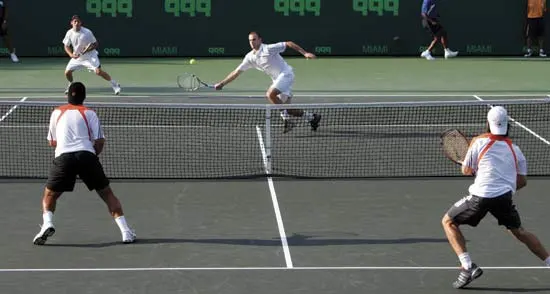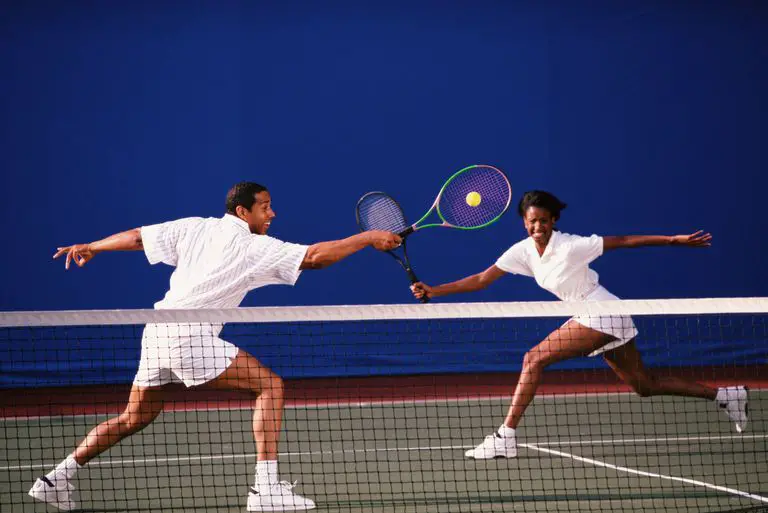What Does SGL Mean In Tennis? ( Explained )
Tennis is a game that has its special terms and jargon. Understanding these words is essential for both experienced players and newbies to the game. SGL is one phrase that frequently appears in conversations and brackets for sporting events. So, in tennis, what does SGL mean?

In this article, we will examine SGL’s relevance and meaning and how it affects tennis competitions, player rankings, and other things. Let’s start now!
Explaining SGL

To demystify SGL, let’s start with the basics. SGL stands for “Singles,” the singles division of tennis matches. Both singles and doubles can be played in a tennis match, pitting one player against another.
When you hear the term “SGL” about tennis, it specifically refers to the singles division. As a result, you may be sure that each time the term “SGL” appears in a tournament draw or schedule, it refers to the individual matches played by single players.
SGL In Tennis Tournaments
Tennis competitions benefit greatly from SGL’s influence on a variety of the competition’s elements. Draws for tournaments are crucial contexts in which SGL is relevant. The pairing of players and matches during a tournament is called a draw. SGL influences players’ placement in the draw and the teams they will play.
Furthermore, SGL directly affects player seeding. Evaluating players according to their performance and ability is known as “seeding.” Higher-seeded players are less likely to face top-ranked opponents early on since they are given advantages like being put in separate brackets until later rounds.
Importance Of Understanding SGL In Tennis

Understanding SGL in tennis is crucial for players, fans, and tournament organizers. It advances players’ careers by assisting them in singles matches by helping them plan and execute better. Understanding SGL improves viewers’ enjoyment of the competition by enabling them to watch player development and foresee thrilling match-ups.
SGL maintains a level playing field by intelligently seeding participants and avoiding early confrontations between top-ranked players. Understanding SGL enables tournament organizers to design fair and interesting events that captivate participants and viewers.
An extensive community on Reddit discusses this question. Check out the link we’ve added right here, please.
Let’s explore the tournament formats associated with SGL (singles) matches to delve further into the details.
Understanding Tournament Formats

Tennis tournaments have various tournament formats, and SGL has different interactions with each type. Two popular formats are Single Elimination and Round Robin.
Single Elimination
Players are eliminated in a single elimination tournament after dropping a match. SGL impacts the draw’s format, which decides who plays who in each round. As the competition continues, fewer players are left until only one is left standing.
Round Robin
A Round Robin competition, on the other hand, guarantees that each player faces off against every other competitor. SGL controls the scheduling and pairings for this format, ensuring that all participants receive equal matches.
How SGL Affects Scoring in Tennis Matches?

It’s important to comprehend the significance of SGL (Singles) in tennis scoring. SGL significantly affects how tennis matches are scored. Let’s examine how SGL impacts the tennis scoring system by delving into the world of tennis scoring.
Let’s now discuss how SGL impacts tennis match scoring. The scoring method for singles matches is based on a point system that works as follows:
Love
It is referred to as “love” when a player has no points. For instance, the score would be “love” or 0-0 if the server has not yet scored any points.
15
A player receives 15 points for their very first point. Therefore, the score changes to 15-0 if the server wins a point. The score would be 15-15, commonly called “15 all” or “15-15,” if both players earned each point.
30
A player receives 30 points for winning their second point. As a result, if the server scores another point, the final result is 30-0. The result would be 30-15 or 15-30 if each player earned a point.
40
A player earns 40 points for winning their third point. The final score would be 40-0 if the server earned one more point. The result would be 40-15 or 15-40 if each player received one point. However, a “deuce” is called if both players have 40 points.
Deuce
Deuce is used when the score is tied at 40-40. Players need to score two points in a row to win the game. The score becomes “advantage-in” for the server, for instance, if the server scores the following point after a deuce. The score resets to deuce if the receiver scores the following point.
Game
A player needs to win four points with a margin of victory of at least two points to win the game. For instance, if the server scores the following two points after a deuce, they are “game-in” and win the round.
If the receiver scores the following point, the score resets to 2, and the game continues until one player has a two-point edge and wins.
I’ll include a YouTube video here so you can see it directly to facilitate things clearer.
SGL vs. DBL: Comparing Singles and Doubles Matches

Tennis matches offer different difficulties and sensations depending on whether they are played singles (SGL) or doubles (DBL). Let’s examine these two formats’ distinctions in more detail:
Singles Matches (SGL)

Tennis singles matches are all about the individual player’s performance. In SGL matches, you and your opponent are the only players on the court. Following are some significant singles match components:
1. One-on-One Competition
Singles matches concentrate on a head-to-head contest between two players. It’s a test of skill, strategy, and mental toughness in which you must outperform your opponent entirely using your skills.
2. Individual Responsibility
You are solely accountable for your performance in SGL matches. You call all the shots and decide on all the tactics. It’s a chance for you to show off your abilities and playing style without the help of a companion.
3. Wider Court Coverage

You must cover the full court by yourself in singles since there is only one other player. Excellent footwork, agility, and court awareness are necessary for this. Running back and forth and from sideline to sideline will be required, testing your endurance and fast reactions.
4. Longer Rallies
Compared to doubles matches, singles matches can feature lengthier rallies. There is greater room to move and set up shots when two players are on the court, leading to prolonged exchanges and deliberate point formation.
5. More Time to Recover
You have more time in singles to regroup and plan between points. You can then gather your thoughts, breathe, and decide what to do next. Before each point, there is a chance to mentally and physically refocus.
Doubles Matches (DBL)

Conversely, doubles matches enhance cooperation and teamwork in the game. Let’s examine the features of doubles competitions:
1. Teamwork and Communication
Playing doubles requires good teamwork and cooperation with your partner.
2. Shared Responsibilities
Unlike singles, you can split the workload with your spouse in a double.
3. Smaller Court Coverage
The area to be covered is smaller in doubles matches because only four players are on the court.
4. Enhanced Net Play

Doubles games strongly emphasize net play, which calls for quick reactions and the capacity to cooperate with your partner.
5. Faster Paced and More Dynamic
Unlike singles matches, doubles matches frequently include more rapid-fire exchanges and a quicker tempo.
Both singles and doubles matches present special charms and difficulties. Tennis offers a wide variety of experiences for players and spectators alike, whether you prefer the individual competitive intensity of singles or the cooperative collaboration of doubles.
Have you got any further questions? If you’re looking for this topic to address, don’t worry; I’ve addressed several queries like it.
FAQs
What other tennis terms are important to know?
Besides SGL, several other terms are essential in tennis. Some notable ones include DBL (Doubles), Grand Slam, deuce, love, advantage, and breakpoint. Understanding these terms adds depth to your knowledge of the sport.
How does SGL differ from DBL in tennis?
SGL refers to the singles category, where one player competes against another, while DBL stands for doubles, where two players form a team to play against another pair.
Can SGL impact a player’s career significantly?
Absolutely! SGL influences player rankings, performance evaluations, and opportunities for participation in prestigious tournaments. A player’s success in SGL events can substantially impact their career trajectory.
Are there any drawbacks to using SGL in tournaments?
While SGL contributes to competitive balance, some argue that it may overlook players’ true potential and occasionally lead to imbalanced matches. Balancing fairness and excitement is an ongoing debate in the tennis community.
Can players influence their SGL position?
Players have some control over their SGL position through their tournament performance. Consistently strong showings in SGL events can help improve a player’s ranking and, consequently, their SGL position in future tournaments.
Conclusion
In conclusion, understanding the meaning and implications of SGL in tennis is essential for fans, players, and tournament organizers. SGL influences tournament draws, player rankings, match-ups, and the overall competitive balance of the sport.
By comprehending the role of SGL, we can appreciate the intricacies of tennis tournaments and the excitement they bring. So, the next time you encounter SGL in a tennis context, you’ll know exactly what it means and how it shapes the competition.






